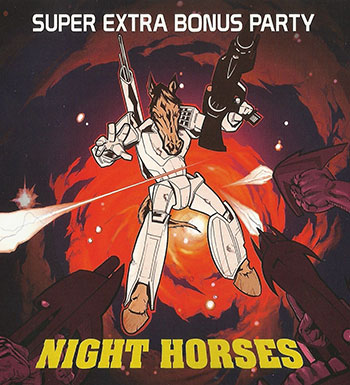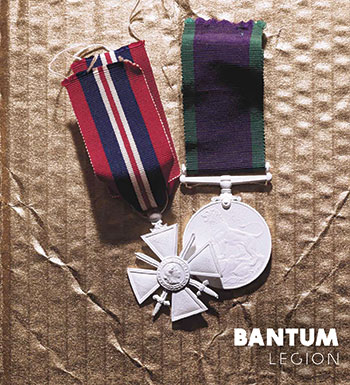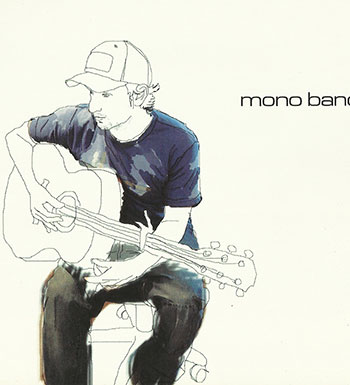1. Shag Tobacco, Gavin Friday, 1995
It is always refreshing to be proven wrong about music. I remember reading a review of Shag Tobacco in The Irish Times, and thinking it sounded like a load of pretentious rubbish.
When I got to hear the album a few weeks later, though, I was humbled and enchanted. From the opening title track to the sinister pop sound of Dolls, Shag Tobacco undertakes a journey through time and tempo. The Last Song I’ll Ever Sing is a ballad like you have never heard before, and Friday’s version of Marc Bolan’s The Slider is immense.
The fact that Shag Tobacco did not reach a substantial mainstream audience is surprising, but, in other ways, not surprising at all. A strong sense of individuality certainly worked for Radiohead’s OK Computer, but Shag Tobacco was perhaps too much of an acquired taste for the time. That said, its brilliance is in its unique, measured sophistication.
2. Ciddy Hall, Nine Wassies From Bainne, 1998
You’ve heard it a thousand times or more: there is nothing truly original in music anymore. There are, however, albums that are so unusual that you will be scratching your head, enthralled, even in trying to place their varied reference points.
Ciddy Hall is an album that brings together many different themes and styles, so much so, that it may take you a few listens before you are fully taken with this unusual piece of work.
When it comes to recording music, so many artists are more conservative than they should be — they end up stripping the soul and energy out of their songs. How many times have you found that an artist’s live show makes their album sound almost stagnant? Nine Wassies and their cast of friends and guests went for an all out assault on the senses, and give us an album with no incomplete measures or ideas.
3. Haunted Light Cap Pas Cap, 2010
There is more than a touch of mystery — and even mysticism — about Haunted Light from Cap Pas Cap.
It is an album that I played constantly on my radio show when it came out, but knew very little about the band. Even now I still do not know that much, and, in some ways, that is the way I would like it to stay.
If you were being unfair, you would categorise this as an alternative rock or indie album (whatever ‘indie’ means anymore).
In actual fact, Haunted Light does a lot more than the first listen will tell you. Friends is the kind of synth-pop tune that, if manipulated, could pass as something that Lady Gaga would put to tremendous effect. The band will likely disagree with this unexpected compliment!
Hearts still ranks as one of the most enchanting tracks that I have ever had the pleasure of hearing.
As so many excellent Irish albums are, this was produced by Stephen Shannon. Whatever he does to the music that he works with, it quite simply works. Streamlines is not the right description, but he leaves the music with its edge, sending it — flowing — in the right direction.
4. Drift, The Devlins, 1993
I remember the unmistakeable sound of Gerry Ryan’s booming voice, introducing a song by the name of Almost Made You Smile. After around 20 seconds in, a band called The Devlins first made a lasting impression on me.
At this point in their career, The Devlins had just about everything going for them. They were getting all the right nods and winks in the US, and intrigue was growing in their native Ireland.
The Newry band, led by brothers Colin and Peter Devlin, had songs that melted their way onto American FM radio.
It is not just good songwriting that makes Drift such a strong album, it is the way that they were recorded and produced.
Would-be pop/rock anthems like Someone To Talk To and I Knew That, sit alongside the beautiful and atmospheric Every Time You Go.
The latter is as good as anything produced by acts like The Blue Nile or Talk Talk in their prime.
Recorded in Dublin, New Orleans and London, this album was — and remains — quite a statement from The Devlins.
5. Night Horses, Super Extra Bonus Party, 2009
Could have and should have are phrases that come to mind when I think of Super Extra Bonus Party’s second album. Was it a difficult second album to make? Who knows, but it is as complete an album as you’re likely to find. It’s packed with killer tunes, and the list of guests is pretty impressive too.
Night Horses followed SEBP’s Choice Music prize-winning debut album, Super Extra Bonus Party LP, released in 2007.
SEBP’s debut album is like a burst of youthful energy, full of strong ideas and fearless experimentation.
Night Horses impresses in a different way — it’s just a far more potent outing than its predecessor.
The band sound confident on this album, aware of the opportunity it is giving them of making a bigger name for themselves, both nationally and internationally.
It jumps seamlessly from the tranquillity of Sonora, featuring Ann Scott, to the ferocity of Eamonn, which has vocals from MayKay of Fight Like Apes. The brilliant Cadence Weapon lends his rhymes to Radar, Heathers sound exceptional on Comets.
6. Legion, Bantum, 2012
Most albums have a time and place attached to them, but when you listen to Legion from Bantum, it is hard to figure out where or when it is from. Is this the mark of a great album? Perhaps. It certainly fits the description of a timeless one.
The mysteriously named Bantum is actually a guy called Ruairi Lynch. Originally from Cork, he has been based in Dublin for many years. The migrated Rebel County man has come up with edgy material for a long time, but on this, his debut, he had clearly grasped everything that there was to making an album of serious quality.
Bantum’s selection of guests on the album is one of its strengths. Benni Johnston supplies gothic vocals on No More and Send Me Under. Elsewhere, Eimear O’Donovan brings a rare kind of joy and light to Oh My Days. It always makes me wonder about the consideration — even torment — that an artist goes through when trying to figure out who should do which track. And then, if things do not work, do you just bin it and start all over again?
Legion is an album that knits together many sounds. In isolation, tracks, like Dice, Roll Pt. II and the album’s title track sound very different, but, put together, they make complete sense. Every band and every album is the sum of its parts, and the components that are placed together here are done so with precision.
7. Kingdom Of Ghosts, Humanzi, 2010
Humanzi never broke any new musical ground, but, at times, they did manage to make a few of their influences sound somewhat wimpy in comparison.
By the time the Dublin band got around to recording their second album, Kingdom of Ghosts, they had relocated to Berlin. Many bands that go through ‘the major label machine’ never manage to survive to record an album independently, or at least on their own terms.
Kingdom of Ghosts was the polar opposite of its 2006 predecessor — no hype, no fanfare and little financial backing, but yet a much more complete album. From being selected to being on the cover of the first issue of the sadly short-lived NME Ireland magazine, to being unfairly relegated to what you could call outsiders, you really get the impression that Humanzi had a point to prove.
They retained the thunderous sound that was a striking characteristic on their debut album, Tremors, and added a serrated, even sinister edge. If Tremors could be described as having a bite like a snarling Rottweiler, then Kingdom of Ghosts was a pack of rabid wolves.
 8. I to Sky, JJ72, 2002
8. I to Sky, JJ72, 2002
Hindsight shows mixed fortunes for JJ72. From the early highs to the extreme disappointment which led to their demise, it is a story that is unfortunate, but not unique, in the world of music. The Dublin three-piece had become the first Irish band, in quite a long time, to make a breakthrough in both Britain and Europe. They had made the cover of (the now defunct) Melody Maker, something that few Irish acts had ever managed to do.
The band received much love from the media for their debut album. But by 2002, when I to Sky arrived, part of that love had dissipated.
I to Sky illustrated both JJ72’s improvement as a band and vocalist Mark Greaney’s growth as a songwriter, singer and figurehead for the band. 7th Wave was a prime example of the band’s progression, and Oiche Mhaith showed a softer, even sweeter side to JJ72.
From listening to I to Sky then and now, you hear how the band revealed a much broader potential than you may have previously realised they were capable of. The frustrating thing, from a listener’s point of view (and, no doubt, the band’s), is that they didn’t have the opportunity to show us how far they could go.
9. Hi-Lo, The Walls, 2000
There are some songs that are stitched into a country’s culture. The Stunning gave us two: Brewing Up A Storm and Half Past Two.
But what happens after your popularity peaks? Do you carry on, or do you split and move on to the next thing?
All sorts of stories started circulating after The Stunning broke up.
The main one was that Joe and Steve Wall had moved to London and become a ‘dance act’.
This turned out to be partially true — the Wall brothers had reinvented themselves, and had a new crop of songs awaiting us.
The first was a single, The Night I Called It A Day, and proved quite a starting point.
Hi-Lo was a departure from what everyone knew of Joe and Steve, yet it is one that sounds perfectly natural.
10. Mono Band, 2005
Regardless of what their critics say, The Cranberries’ success is something that most people cannot even begin to grasp. They sold millions of albums and became household names.
After more than a decade of lengthy tours and recordings, The Cranberries took some time out from being The Cranberries. During that period, Noel Hogan undertook an unexpected project.
Combining world music, alternative folk ballads and aspects of electronic music, he came up with Mono Band.
The opening track, Brighter Sky, still enlists curiosity to this day. It sounds like the offspring of a relationship between Led Zeppelin and Transglobal Underground, with some Tinariwen bloodlines thrown in there too.
Much was made of the stylistic gulf between Mono Band and the material released by The Cranberries in previous years, but there are subtle links between some of the Mono Band and Cranberries tracks, like Daffodil Lament and How.
An extract taken from Buried Treasure, Overlooked, Forgotten and Uncrowned Classic Albums by Dan Hegarty, available now, published by Liberties Press, £12.99






